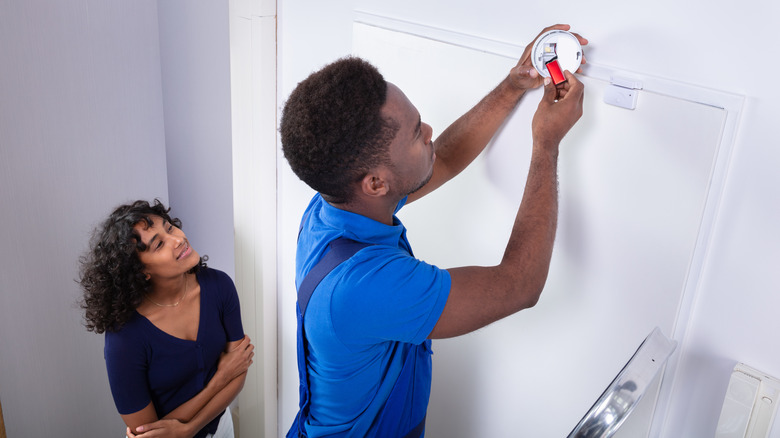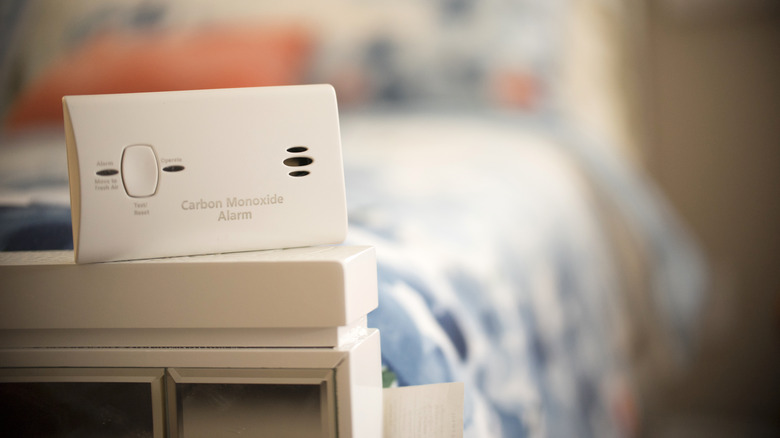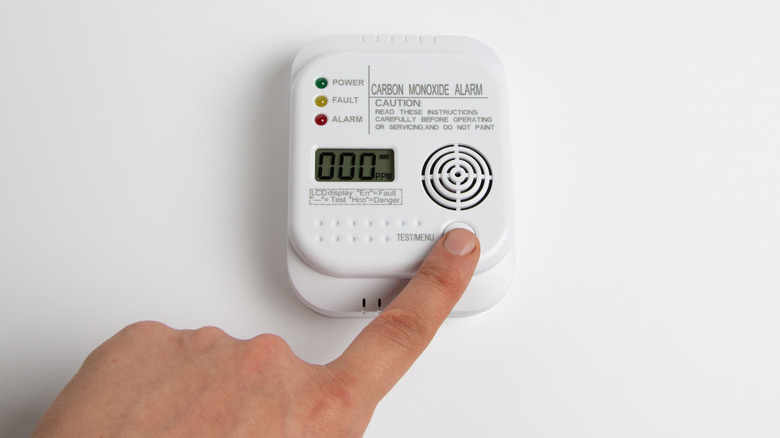Here's Where You Should Place Your Carbon Monoxide Alarm
The importance of having a reliable carbon monoxide (CO) alarm cannot be overstated, as it serves as the first line of defense against this hazardous gas. While there are general recommendations for CO alarm placement, such as having at least one on each level of the home and near sleeping areas, it is crucial to consider specific locations that maximize safety, per the National Fire Protection Association. There are several other areas in your house that warrant careful attention when deciding where to install your CO alarms.
By adhering to these guidelines, you can create an effective network of carbon monoxide detectors throughout your home, providing comprehensive coverage and early detection of this invisible threat, which could literally be lifesaving. In addition, exploring common mistakes to avoid and learning additional safety tips will enhance your carbon monoxide safety measures. Ultimately, the goal is to empower yourself with the knowledge to safeguard your loved ones from the dangers of this gas.
Placement guidelines for carbon monoxide alarms
The U.S. Environmental Protection Agency (EPA) advises installing at least one carbon monoxide alarm on each level of your home. Additionally, placing alarms near sleeping areas is essential since we are most vulnerable to CO poisoning while asleep. The kitchen and living areas should also be considered. These areas often contain fuel-burning appliances, such as gas fireplaces, stoves, ovens, or heaters, which can be sources of carbon monoxide. Other important locations to consider are the basement and utility rooms. Boilers, water heaters, or furnaces are commonly found in these areas, and any malfunction or leakage can lead to carbon monoxide buildup.
In addition, if your home has an attached garage, it is crucial to place a carbon monoxide alarm in the adjacent area. Vehicle exhaust fumes can seep into the garage, and if the garage is connected to the living space, carbon monoxide can easily spread to the rest of the house, per Titan Alarm and Fire. While these guidelines provide a starting point, it is essential to consult the manufacturer's instructions for your specific CO alarm model. Following their recommendations regarding placement and installation procedures will help ensure the alarm functions optimally and provides the best possible protection against carbon monoxide hazards.
Common mistakes and additional tips
One common error people make is placing carbon monoxide alarms near windows or vents. Drafts or airflow can dilute the gas concentration, reducing the alarm's ability to detect it, per Sterling Home Inspections. Another mistake to avoid is installing them in areas prone to false alarms, such as directly above or very close to fuel-burning appliances, or in areas with high humidity or steam, such as the bathroom.
Other safety tips can increase your safety measures. For instance, inspect and maintain fuel-burning appliances annually to ensure they are functioning properly and not emitting dangerous levels of carbon monoxide, according to the U.S. Consumer Product Safety Commission. Additionally, teach your family about the signs and symptoms of carbon monoxide poisoning, the importance of proper ventilation, and the need to report any potential issues immediately. Consider investing in interconnected carbon monoxide alarm systems for larger homes or homes with multiple levels. Interconnected alarms communicate with each other, so if one alarm detects carbon monoxide, all alarms in the network will sound, providing an early warning throughout the house. Finally, regularly test your alarms to ensure they are functioning correctly.


